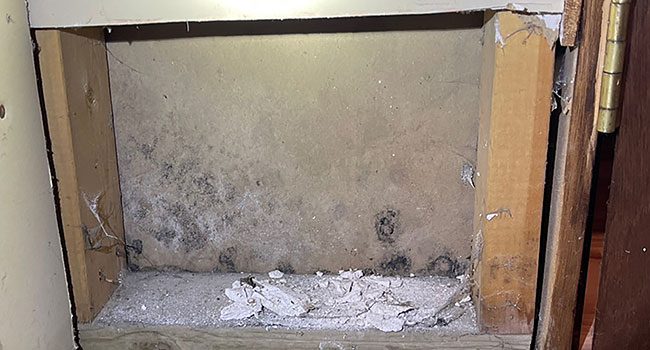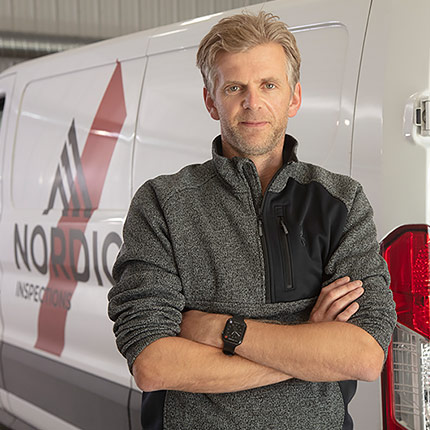- Excessive Moisture: Mold thrives in environments with high moisture levels. Leaks, water intrusion, or humidity issues can create conditions conducive to mold growth.
- Poor Ventilation: Inadequate ventilation can trap moisture indoors, promoting mold development. Proper ventilation helps maintain optimal moisture levels and reduces the risk of mold.
- Water Damage: Previous water damage, whether from leaks, floods, or plumbing issues, can create lingering moisture that fosters mold growth if not properly addressed.
- Inadequate Insulation: Poor insulation can lead to condensation on surfaces, providing a favorable environment for mold. Ensuring proper insulation helps regulate temperature and reduce moisture accumulation.
- Improperly Maintained HVAC Systems: HVAC systems that are not well-maintained may circulate mold spores throughout the home, contributing to contamination.
- Lack of Regular Inspections: Without regular inspections by professionals, hidden mold issues may go unnoticed, allowing for unchecked growth.
- Building Materials: Certain building materials, especially if they are prone to moisture absorption, can contribute to mold growth if not properly sealed or treated.
Identifying and addressing these factors, along with implementing preventive measures, is crucial for effective mold prevention and remediation. Consulting with a certified indoor environmentalist can help assess specific conditions in your home and develop targeted solutions.
- Respiratory Irritation: Mold releases spores and mycotoxins that can trigger respiratory irritation. For individuals with asthma, inhaling these airborne particles can exacerbate symptoms such as coughing, wheezing, and shortness of breath.
- Allergic Reactions: Mold spores are known allergens, and people with asthma often have heightened sensitivity to allergens. Exposure to mold can lead to allergic reactions, worsening asthma symptoms and potentially causing asthma attacks.
- Airway Inflammation: Mold exposure can contribute to airway inflammation in individuals with asthma. This inflammation can make the airways more sensitive and reactive, increasing the likelihood of asthma-related symptoms.
- Increased Asthma Severity: Prolonged exposure to mold may lead to increased asthma severity over time. It can contribute to chronic inflammation and persistent respiratory issues, requiring more intensive asthma management.
- Risk of Fungal Infections: Individuals with asthma may be at an increased risk of developing fungal infections in the respiratory system, especially if exposed to certain types of mold that can cause infections in susceptible individuals.
To mitigate these risks, it's crucial for individuals with asthma to address and eliminate mold sources in their indoor environment. This involves proper ventilation, moisture control, and timely remediation of any mold growth. Consulting with a certified indoor environmentalist can help identify and address specific mold issues tailored to individual health concerns.
Mold and mildew are both types of fungi, but there are distinctions between them based on their appearance, growth habits, and the surfaces they affect:
- Mold: It often appears as fuzzy or slimy patches that can be black, green, brown, yellow, or other colors. Mold has a more varied and textured appearance.
- Mildew: It typically looks powdery or fluffy and is usually white or gray. Mildew tends to have a more flat and powdery appearance.
- Mold: Comes in various colors, and the color may vary depending on the specific type of mold.
- Mildew: Tends to be white or gray, but can sometimes have a yellow or brown hue.
- Mold: Grows on a variety of surfaces, including organic materials like wood, drywall, and fabric, as well as non-organic surfaces like glass and metal.
- Mildew: Often grows on living plant surfaces, such as leaves, and is commonly found in damp or moist areas.
- Environmental Conditions:
- Mold: Thrives in a wider range of environmental conditions, including both indoor and outdoor settings. It requires more moisture to grow compared to mildew.
- Mildew: Prefers a more limited range of conditions, typically found in damp or humid environments.
- Mold: Certain types of mold can produce mycotoxins that may have health implications, especially for individuals with sensitivities or allergies.
- Mildew: Generally considered less harmful to health compared to certain types of mold.
While the terms "mold" and "mildew" are sometimes used interchangeably colloquially, understanding these differences can help in appropriate identification and remediation efforts. Both can be addressed through proper moisture control and remediation measures.





